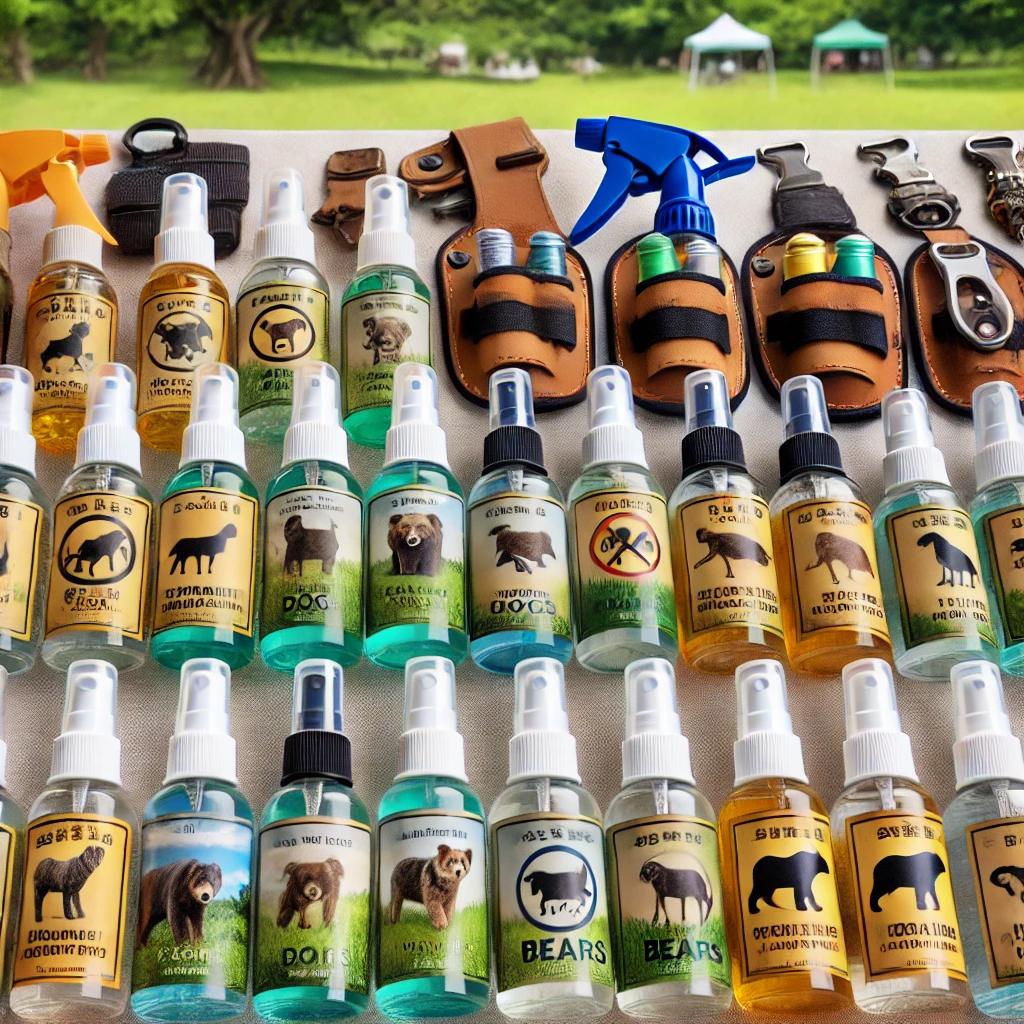In our ever-evolving world, the boundaries between human habitats and wildlife are becoming increasingly blurred. As cities expand and encroach upon natural environments, interactions between humans and animals have intensified. Whether it’s a raccoon rummaging through garbage or a deer munching on garden plants, these encounters can pose challenges for both parties. This is where animal repellent spray steps in as a valuable tool for managing wildlife interactions while ensuring safety and respect for our animal counterparts.
This blog will delve into the importance of animal repellent sprays, how they function, the various types available, and best practices for their use. By the end, you’ll have a comprehensive understanding of how to effectively navigate the complexities of living alongside wildlife.
The Growing Need for Animal Repellent Spray
As urbanization continues, wildlife is increasingly adapting to human environments. This adaptation often leads to conflicts, especially when animals seek food and shelter in residential areas. The repercussions of such encounters can be serious, leading to property damage, potential harm to pets, and, in some cases, injuries to humans.
The Role of Animal Repellent Spray
Animal repellent sprays serve as a non-lethal means of deterring wildlife from entering unwanted areas. These sprays are formulated to create unpleasant sensory experiences for animals, encouraging them to avoid certain locations without causing harm. As more people recognize the need for humane solutions to wildlife encounters, the demand for effective animal-repellent products has surged.
How Animal Repellent Spray Works
Understanding how animal repellent sprays function is crucial for their effective application. Most sprays are designed to target the senses of animals—primarily their smell and taste.
Key Ingredients
-
Capsaicin: This is the active ingredient in many animal repellents, derived from chili peppers. Capsaicin irritates the mucous membranes of animals, causing a burning sensation when they smell or taste it. This reaction serves as a strong deterrent.
-
Essential Oils: Natural ingredients like peppermint, citrus, and eucalyptus oils are often included in repellent formulations. These scents are unpleasant to many animals, making them effective for keeping smaller wildlife at bay.
-
Taste Aversion Agents: Some repellents include ingredients that make plants or surfaces taste bad to herbivores, helping to protect gardens and landscaping.
Different Types of Animal Repellent Sprays
Various types of animal repellent sprays cater to different wildlife species and situations. Understanding these options can help you select the most effective product for your needs.
1. Garden and Plant Protectors
These sprays are specifically designed to deter herbivores, such as deer and rabbits, from feeding on plants. Typically made with natural ingredients, these repellents are safe for use around edible plants. Regular application is often necessary, especially after rainfall.
2. General Wildlife Deterrents
General animal repellent sprays can be effective against a range of common urban wildlife, including raccoons, squirrels, and stray cats. These sprays often contain capsaicin or essential oils, providing a broad-spectrum deterrent.
3. Specialized Repellents
For specific animals, such as bears or coyotes, specialized repellents are available. These products may contain higher concentrations of active ingredients designed to target the behavior of these larger, more aggressive animals.
Best Practices for Using Animal Repellent Spray
To maximize the effectiveness of animal repellent sprays, it’s essential to follow certain best practices.
1. Choose the Right Product
Selecting the appropriate repellent based on the animal you’re trying to deter is crucial. Consider the species and their specific behaviors when choosing a spray.
2. Read Instructions Carefully
Before using any product, always read the label and follow the manufacturer’s instructions. This ensures safe and effective application.
3. Apply Strategically
Focus on areas where animals are likely to enter or congregate. For example, if raccoons are frequent visitors to your trash cans, applying repellent around those bins can help deter them.
4. Reapply as Needed
Environmental factors, such as rain or wind, can reduce the effectiveness of repellents. Regular reapplication is essential to maintain a barrier against unwanted animals.
5. Combine with Other Measures
While animal repellent sprays are effective, they work best when combined with other preventive measures. For instance, securing trash bins, using fencing, and removing food sources can create a comprehensive strategy for wildlife management.
The Importance of Humane Wildlife Management
As we navigate living alongside wildlife, embracing humane approaches is paramount. Animal repellent sprays align with this ethos by providing non-lethal solutions to deter animals.
Promoting Coexistence
By using animal repellent sprays responsibly, we can promote a culture of coexistence with wildlife. These products not only protect our homes and gardens but also prevent unnecessary harm to animals, fostering a more harmonious relationship.
Understanding the Ecological Impact
It’s essential to consider the broader ecological implications of using animal repellent sprays. Many wildlife species play crucial roles in their ecosystems, contributing to biodiversity and environmental health.
1. Preserving Biodiversity
By deterring animals from human habitats without harming them, we support the preservation of biodiversity. Healthy ecosystems depend on a variety of species, and responsible wildlife management helps maintain this balance.
2. Reducing Human-Wildlife Conflict
Effective animal repellent sprays can minimize human-wildlife conflict, leading to fewer injuries and property damage. By understanding animal behaviors and using repellents strategically, we can create safer environments for all.
Innovations in Animal Repellent Technology
As our understanding of wildlife and their behaviors evolves, so too does the technology behind animal repellent sprays. Researchers are continuously exploring new materials and methods to create even more effective products.
1. Environmentally Friendly Formulations
The demand for eco-friendly products has led to the development of repellents that use biodegradable ingredients. These formulations provide effective deterrents without compromising environmental integrity.
2. Enhanced Longevity
Future innovations may focus on creating longer-lasting repellents, reducing the frequency of application required. This not only makes them more convenient for users but also helps ensure continued protection.
Community Engagement and Education
Community involvement plays a significant role in managing human-wildlife interactions. By fostering awareness and education, we can empower individuals to take proactive steps in using animal repellent sprays responsibly.
1. Workshops and Training
Organizing workshops on wildlife management can help residents understand the importance of animal repellent sprays and how to use them effectively. Engaging with local wildlife organizations can provide valuable resources and support.
2. Promoting Awareness Campaigns
Public awareness campaigns can highlight the significance of humane wildlife management and the role of animal repellent sprays in achieving this goal. By sharing success stories and best practices, communities can learn from one another.
Conclusion:
As we continue to navigate the complexities of living alongside wildlife, animal repellent sprays emerge as essential tools in promoting safety and coexistence. By understanding their effectiveness, applications, and best practices, we can create environments that respect both human needs and wildlife welfare.
Investing in animal repellent sprays not only protects our homes and gardens but also contributes to a culture of empathy and understanding toward the animals we share our spaces with. Let us embrace these solutions as we work together to foster harmony between humans and wildlife, ensuring a sustainable future for all.


